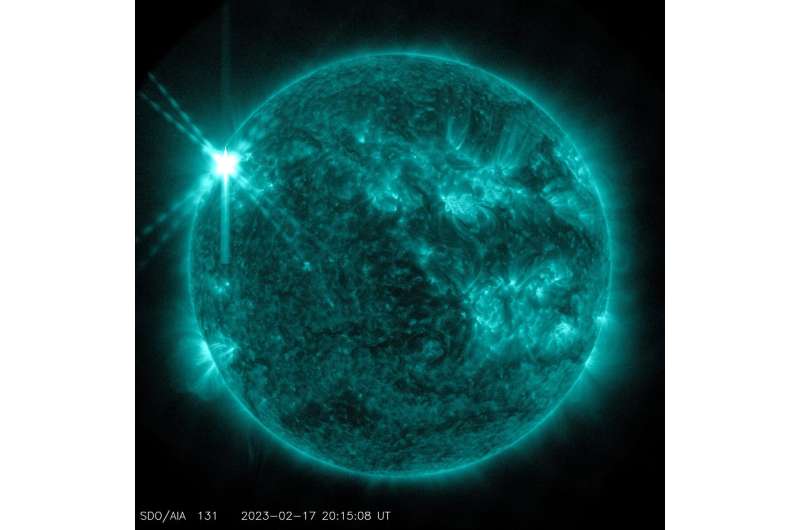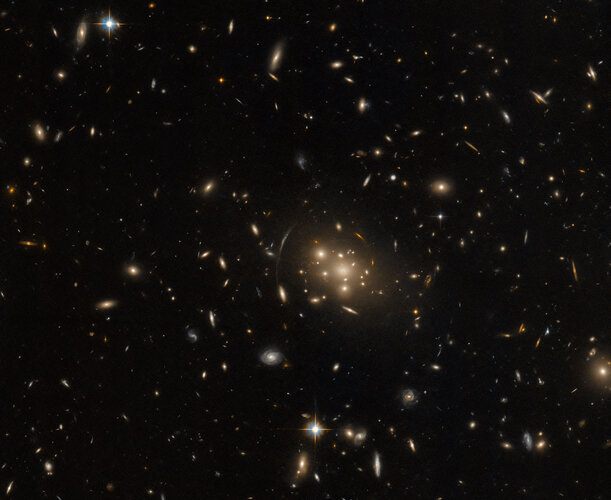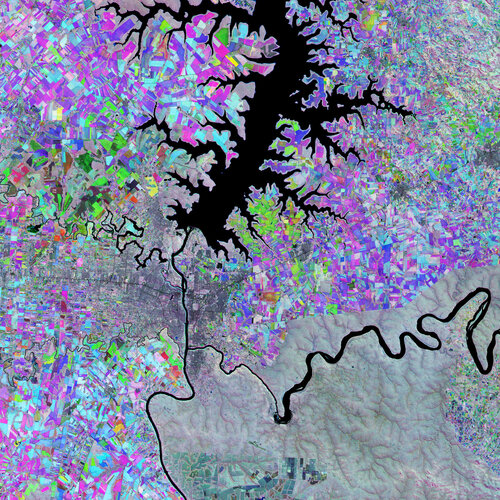
Copernical Team
Image: Sun releases strong solar flare

The Sun emitted a strong solar flare, peaking at 3:16 p.m. ET on Feb. 17, 2023. NASA's Solar Dynamics Observatory, which watches the Sun constantly, captured an image of the event.
NASA's Solar Dynamics Observatory captured this image of a solar flare—as seen in the bright flash in the upper left—on Feb. 17, 2023.
The image shows a subset of extreme ultraviolet light that highlights the extremely hot material in flares and which is colorized in teal.
Solar flares are powerful bursts of energy. Flares and solar eruptions can impact radio communications, electric power grids, navigation signals, and pose risks to spacecraft and astronauts.
This flare is classified as an X2.2 flare. X-class denotes the most intense flares, while the number provides more information about its strength.
Provided by NASA's Goddard Space Flight Center
New research models concept for data transport using train of satellites
 Although the Pony Express lasted only a short time in the mid-1800s before being outperformed by the transcontinental telegraph, it inspired a concept for a string of small satellites to transport data from Mars to Earth and help alleviate the data logjam currently occurring in the Deep Space Network.
"The Solar System Pony Express is a mission concept that aims to augment the data transmi
Although the Pony Express lasted only a short time in the mid-1800s before being outperformed by the transcontinental telegraph, it inspired a concept for a string of small satellites to transport data from Mars to Earth and help alleviate the data logjam currently occurring in the Deep Space Network.
"The Solar System Pony Express is a mission concept that aims to augment the data transmi Luxembourg Announces Intent to Leverage SES's O3b mPOWER for Europe and NATO
 The Government of Luxembourg has announced that it will use SES's O3b mPOWER system as a crucial resilient satcom infrastructure for Luxembourg, its partners, and NATO in the areas of defense and security, disaster recovery, and more. The program, MEO Global Services (MGS), valued at 195 million euro over 10 years, will authorize the acquisition and operation of O3b mPOWER services, subject to a
The Government of Luxembourg has announced that it will use SES's O3b mPOWER system as a crucial resilient satcom infrastructure for Luxembourg, its partners, and NATO in the areas of defense and security, disaster recovery, and more. The program, MEO Global Services (MGS), valued at 195 million euro over 10 years, will authorize the acquisition and operation of O3b mPOWER services, subject to a Cosmic contortions
 Image:
Cosmic contortions
Image:
Cosmic contortions Earth from Space: The Triple Frontier
 Image:
The Triple Frontier, a region where Paraguay, Brazil and Argentina meet, is featured in this false-colour image, captured by the Copernicus Sentinel-2 mission.
Image:
The Triple Frontier, a region where Paraguay, Brazil and Argentina meet, is featured in this false-colour image, captured by the Copernicus Sentinel-2 mission. Building a Giant 2D Map of the Universe to Prepare for the Largest 3D Map
 Before DESI, the Dark Energy Spectroscopic Instrument, can begin its 5-year mission from an Arizona mountaintop to produce the largest 3D sky map yet, researchers first needed an even bigger 2D map of the universe.
The 2D map, pieced together from 200,000 telescope images and several years of satellite data, lacks information about galaxy distances, and DESI will supply this and provide ot
Before DESI, the Dark Energy Spectroscopic Instrument, can begin its 5-year mission from an Arizona mountaintop to produce the largest 3D sky map yet, researchers first needed an even bigger 2D map of the universe.
The 2D map, pieced together from 200,000 telescope images and several years of satellite data, lacks information about galaxy distances, and DESI will supply this and provide ot Over one billion galaxies blaze bright in colossal map of the sky
 The largest two-dimensional map of the sky ever made has grown even larger with the tenth data release from the DESI Legacy Imaging Surveys - a monumental six-year survey covering nearly half the sky. This new data release adds increased sky and wavelength coverage to the already completed surveys made with data from NSF's NOIRLab telescopes at Kitt Peak National Observatory in Arizona and Cerro
The largest two-dimensional map of the sky ever made has grown even larger with the tenth data release from the DESI Legacy Imaging Surveys - a monumental six-year survey covering nearly half the sky. This new data release adds increased sky and wavelength coverage to the already completed surveys made with data from NSF's NOIRLab telescopes at Kitt Peak National Observatory in Arizona and Cerro How could the Aurora Borealis affect energy grids when renewables are added to the mix
 As the world transitions toward more renewable energy resources and deals with the consequences of a changing climate, the resiliency of energy infrastructure is becoming ever more urgent. University of Oklahoma researcher Paul Moses, Ph.D., has received a Faculty Early CAREER Development award from the National Science Foundation to better understand how chaotic grid disturbances from events li
As the world transitions toward more renewable energy resources and deals with the consequences of a changing climate, the resiliency of energy infrastructure is becoming ever more urgent. University of Oklahoma researcher Paul Moses, Ph.D., has received a Faculty Early CAREER Development award from the National Science Foundation to better understand how chaotic grid disturbances from events li Weighing OJ 287 and the project MOMO
 An international research group led by Stefanie Komossa from the Max Planck Institute for Radio Astronomy in Bonn, Germany, presents important new results on the galaxy OJ 287, based on the most dense and longest radio-to-high-energy observations to date. The scientists were able to test crucial binary model predictions using multiple observing tools including the Effelsberg radio telescope and
An international research group led by Stefanie Komossa from the Max Planck Institute for Radio Astronomy in Bonn, Germany, presents important new results on the galaxy OJ 287, based on the most dense and longest radio-to-high-energy observations to date. The scientists were able to test crucial binary model predictions using multiple observing tools including the Effelsberg radio telescope and Study Finds Venus' 'Squishy' Outer Shell May Be Resurfacing the Planet
 Earth and Venus are rocky planets of about the same size and rock chemistry, so they should be losing their internal heat to space at about the same rate. How Earth loses its heat is well known, but Venus' heat flow mechanism has been a mystery. A study that uses three-decade-old data from NASA's Magellan mission has taken a new look at how Venus cools and found that thin regions of the planet's
Earth and Venus are rocky planets of about the same size and rock chemistry, so they should be losing their internal heat to space at about the same rate. How Earth loses its heat is well known, but Venus' heat flow mechanism has been a mystery. A study that uses three-decade-old data from NASA's Magellan mission has taken a new look at how Venus cools and found that thin regions of the planet's 